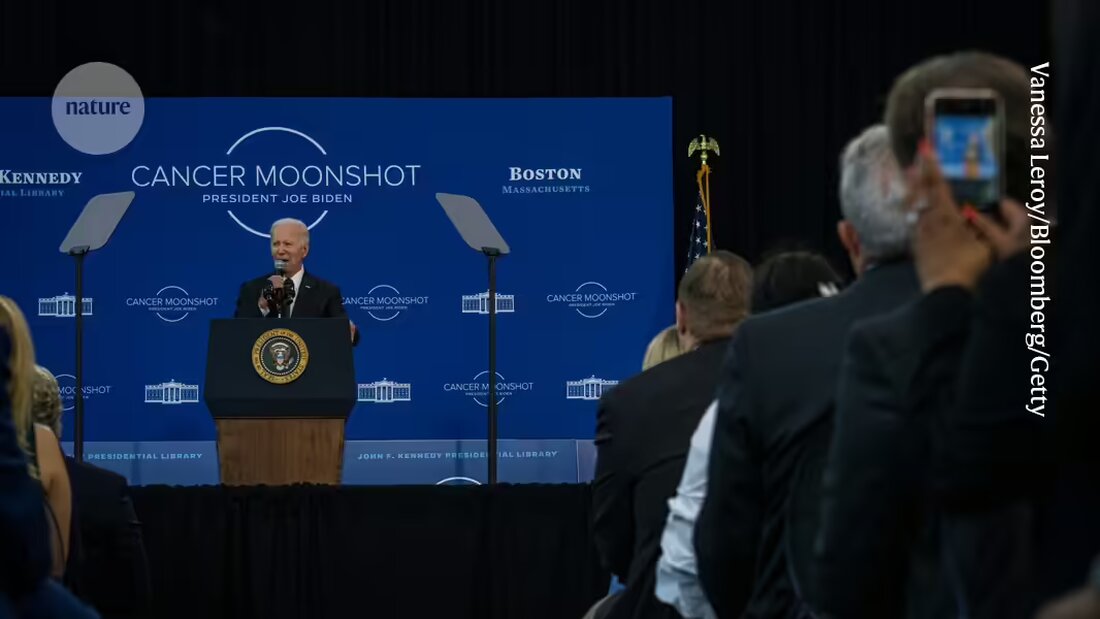Budget cuts meet world's largest sponsors of cancer research: Effects on scientists
Budget cuts meet world's largest sponsors of cancer research: Effects on scientists
For the first time in almost a decade, the US National Cancer Institute (NCI) is faced with a budget shortening - with low hopes for an increase in the coming year.
The budget of the NCI of $ 7.2 billion in the financial year 2024 continues to secure its position as largest donor for cancer research worldwide . However, the authority is $ 96 million below the amount of the previous year, which is largely due to programs like the first Cancer Moonshot Initiative can be attributed in addition to the core budget of the authority.
For the coming year, there is hardly any improvement. Through a two-year agreement in the US Congress to to limit the public debt , it is unlikely that the NCI 2025 will experience an increase, says Jon Retzlaff, Chief Policy Officer of the American Association for Cancer Research (AACR) in Philadelphia, Pennsylvania. "We will probably be back in this situation next year," he explains. "It is very difficult to convince legislators that this is an area that you can increase if you have to drastically shorten many other programs at the same time."
Nevertheless, the NCI held on an ambitious target of $ 11.5 billion for its 2026 budget proposal, which was published on September 4. However, this was the same budget that the authority had already proposed in its application for 2025. This is unusual: the head of the institute usually increase their proposed budget every year. (The NCI is part of the US National Institutes of Health, but is sufficient every year a separate budget application, which is sometimes referred to as an avoidance budget.)
"It didn't seem to be smart to name an even larger number in this current phase," said NCI director Kimryn Rathmell during a meeting with NCI advisors on September 3. "We try to signal that we understand it. We are aware of the financial reality and recognize the real economic restrictions with which our country is confronted."
behind the decline
The decline in the budget of the NCI does not mean that the authority has lost the cross-party support of US legislators, explains Retzlaff. The decline in funds is not due to cuts in the authority's base budget, but that special, separately financed programs that are managed by the NCI have expired and have not been replaced. This includes the original Cancer Moonshot program, which was financed by the 21st Century Cures Act, which came into force in 2016 In the past two decades, however, the constant growth of the NCI has not led to an increase in purchasing power, explained Weston Rick, director of the NCI office and finance on September 3. In absolute dollars, the base budget of the NCI from $ 4.6 billion rose to $ 7.2 billion in 2024 in 2003. However, this increase corresponds to a loss of the purchasing power of 15%, after the rate of Biomedical inflation was taken into account, which usually exceeds general consumer disease, says Ricks.
In the meantime, the number of funding applications at the NCI has increased by 40% in the past ten years, compared to 17% at other institutes and centers of the National Institute of Health.
With all this in mind, the institute has to make some difficult decisions, says Rathmell. The authority will prioritize studies that could lead to new therapies through research projects that aim to improve access to existing therapies. In addition, she will prefer research projects that are initiated by applicants instead of grants selected on specific topics selected by NCI officials.
Rathmell also undertaken to keep the proportion of grants awarded to young researchers stable - a procedure that supports the AACR, says Retzlaff. "This pipeline is the future of cancer research," he emphasizes. "It has to be a priority."


Kommentare (0)